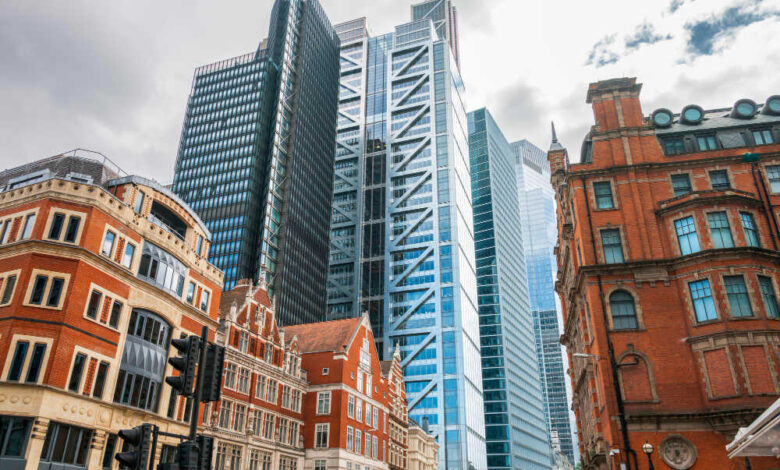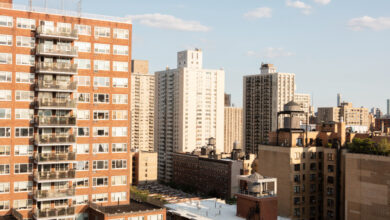How London’s Property Market Has Changed Over the Last Decade

Over the past decade, London’s property market has experienced significant changes driven by shifting economic conditions, evolving buyer preferences, and government policies. From rising house prices to new investment hotspots, the capital’s real estate landscape continues to attract both domestic and international buyers. Understanding these changes is essential for anyone considering an investment in London, particularly in prestigious areas like St John’s Wood.
1. Rising Property Prices and Market Fluctuations
One of the most notable changes in London’s property market over the last decade has been the fluctuation in property prices. Between 2013 and 2016, house prices in London experienced rapid growth due to strong demand, low-interest rates, and an influx of overseas investors. Prime areas, including St John’s Wood, became highly sought-after for their luxury properties and desirable postcodes.
However, the market saw a slowdown following the Brexit referendum in 2016. Uncertainty surrounding the UK’s exit from the European Union led to a dip in buyer confidence and a cooling-off in price growth. Despite this, desirable neighborhoods maintained their value better than outer areas, with property for sale in St Johns Wood remaining a popular choice for affluent buyers.
Post-pandemic recovery has also impacted the market. By 2023, property prices in Prime Central London and surrounding areas began to rebound due to renewed interest from international investors, particularly those looking for larger homes with outdoor spaces.
2. The Impact of Stamp Duty Reforms
Changes in government policy have also played a critical role in shaping London’s property market. One of the most significant reforms was the introduction of higher stamp duty rates for second-home buyers and foreign investors. Implemented in 2016, these changes increased transaction costs and slowed down the upper end of the market.
While this policy initially led to a short-term decline in high-value transactions, it also created an opportunity for buyers to negotiate better deals. Areas like St John’s Wood, known for its mix of elegant period homes and modern developments, remained resilient despite these tax changes. Many buyers view the area as a long-term investment, mitigating the impact of higher acquisition costs.
3. Shifts in Buyer Preferences
Over the last decade, buyer preferences in London have shifted significantly. While small, centrally located apartments were once in high demand, there is now a greater emphasis on spacious homes with access to green spaces. This trend accelerated during the COVID-19 pandemic, as remote work increased the demand for properties with home offices, private gardens, and outdoor amenities.
St John’s Wood has particularly benefited from this shift. Its proximity to Regent’s Park and its family-friendly community appeal to both domestic and international buyers. Properties for sale in St Johns Wood reflect these preferences, offering spacious layouts and luxury amenities that cater to the modern buyer.
4. Increased Interest from International Buyers
London’s property market has always been a magnet for international investment, and the past decade has been no exception. Currency fluctuations, combined with political stability compared to other global markets, have made London an attractive destination for high-net-worth individuals seeking safe, long-term investments.
Areas like St John’s Wood continue to draw attention from overseas buyers due to their exclusive nature and proximity to central business hubs. With ongoing infrastructure improvements, such as the Elizabeth Line, connectivity across London has improved, making outer prime areas even more accessible and desirable.
5. The Rise of Sustainable and Smart Homes
Environmental consciousness and technological advancements have also shaped London’s property market. Over the last decade, there has been a growing demand for energy-efficient homes and smart technology integration. Buyers are increasingly prioritising properties with sustainable features, such as solar panels, efficient heating systems, and smart home controls.
Developers in St John’s Wood have responded to this trend by incorporating modern, eco-friendly features into new-build properties. As a result, properties for sale in St Johns Wood often appeal to environmentally conscious buyers looking for a balance between luxury and sustainability.
6. Emerging Investment Opportunities
While Prime Central London has traditionally been the focus for investors, areas on the city’s periphery are now gaining traction. Regeneration projects, improved transport links, and more affordable entry points make these areas attractive for capital appreciation and rental yields.
Despite this, well-established prime neighborhoods like St John’s Wood continue to be viewed as stable investments. The combination of heritage properties, excellent schools, and a thriving local community ensures consistent demand, even as outer areas grow in popularity.
7. The Role of Technology in Property Transactions
The past decade has also seen a digital transformation in how property transactions are conducted. Virtual tours, digital contracts, and online property platforms have streamlined the buying process. This shift has been particularly beneficial for international buyers who can explore properties remotely.
Estate agents specialising in prime areas, such as those handling property for sale in St Johns Wood, have adopted these technological innovations to enhance customer experiences and provide comprehensive market insights. This digital approach has made the property market more accessible and transparent.
Conclusion
The last decade has brought significant changes to London’s property market, from shifting buyer preferences and technological advancements to regulatory reforms and market fluctuations. Despite these transformations, certain areas like St John’s Wood have maintained their appeal due to their unique blend of history, luxury, and modern living.
For those considering investing in London, understanding these market changes is crucial. Whether seeking long-term capital appreciation or a prestigious residence, property for sale in St Johns Wood offers a compelling opportunity. With its enduring charm and resilient market position, St John’s Wood remains a top choice for discerning buyers and investors looking to secure a stake in London’s ever-evolving real estate landscape.




